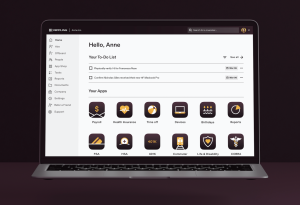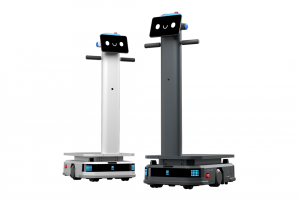3 ways apps are learning to talk to each other
![]() Today we have hundreds of software applications that we use to perform various tasks. These applications initially were PC-based, but with the growth of the mobile trend we saw these applications and more flood over to our smartphones and tablets. We have applications for social media, banking, note-taking, file hosting, web bookmarking, news aggregating, and other tasks.
Today we have hundreds of software applications that we use to perform various tasks. These applications initially were PC-based, but with the growth of the mobile trend we saw these applications and more flood over to our smartphones and tablets. We have applications for social media, banking, note-taking, file hosting, web bookmarking, news aggregating, and other tasks.
While these applications are very useful by making tasks and access to information easier most applications run in a “sandbox”, which means they run separately with very little sharing of data. This is a setup to ensure information security. The nuisance this causes relates to information overlap.
Many times an application has a need for similar, if not the exact same information contained in another application, but has no way of getting that information without it being inputted by the user manually. To address this issue developers have been creating ways for applications to “talk” to one another. Here’s a look at three areas that are currently finding solutions for app-to app communications.
Home automation
One area finding solutions related to application communication is the smart home. There are home automation applications for HVAC, lighting, shading, intercoms, and security. Many times these applications are not an all in one package, and each has a separate control. So while the home may be smarter, the homeowner that has multiple automations is stuck with a collection of applications that all have to be operated separately.
Some companies are now developing smart application hubs for these automation features. These hubs take the various applications that a smart home may have, and gives them all a central control point. A homeowner can then go to their home computer to control every aspect of their smart home. Some hubs, like the Revolv Hub covered here, have a mobile application to allow the control to be done from a smartphone or tablet. Check out some other smart hubs here.
Workflows
.
![]() Another form of application communication that is coming about involves application workflows and combining tasks. Ink has a mobile software development kit for iOS that developers can integrate into their applications. “Once an app is Ink-enabled it can send data to other Ink-enabled apps, which can then, in turn, send that data back or forward it on to another Ink-enabled app or cloud storage service.” This sort of application communication would allow the sharing of files and documents that may edited in one application, emailed from a second application, and then saved to the cloud.
Another form of application communication that is coming about involves application workflows and combining tasks. Ink has a mobile software development kit for iOS that developers can integrate into their applications. “Once an app is Ink-enabled it can send data to other Ink-enabled apps, which can then, in turn, send that data back or forward it on to another Ink-enabled app or cloud storage service.” This sort of application communication would allow the sharing of files and documents that may edited in one application, emailed from a second application, and then saved to the cloud.
IFTTT is another example of ways apps can “communicate” with each other, providing a service that can be used to combine application tasks. This service allows users to build connections using an “if this then that” formula. IFTTT currently has 72 applications (that they refer to as “channels”), which these formulas can be built with. The example they give autosaves Instagram photos to Dropbox when a user uploads one.
Behind the scenes
A third type of application communication that works more in the background has been patented by Veveo. This patent is entitled, Methods and Systems for Selecting and Presenting Content on a First System Based on User Preferences Learned on a Second System.
This form of application communication will allow user experiences on a device to be tailored to a particular user. This patent would enable a system to “learn” the preferences of a user based on their activity. If a user browses the internet about a particular sports team, follows that team on Twitter, tweets about that team, or follows that team on Facebook; the system they are using would remember that. If the user opens a sports application on that same system, it would automatically know to provide scores and news related to that exact same team.
photo credit: Chris JL via photopin cc
A message from John Furrier, co-founder of SiliconANGLE:
Your vote of support is important to us and it helps us keep the content FREE.
One click below supports our mission to provide free, deep, and relevant content.
Join our community on YouTube
Join the community that includes more than 15,000 #CubeAlumni experts, including Amazon.com CEO Andy Jassy, Dell Technologies founder and CEO Michael Dell, Intel CEO Pat Gelsinger, and many more luminaries and experts.
THANK YOU













